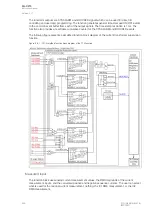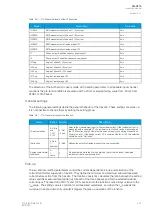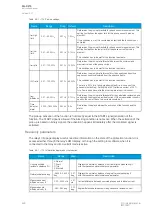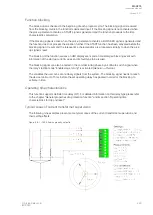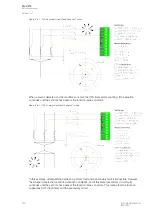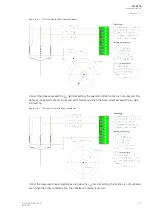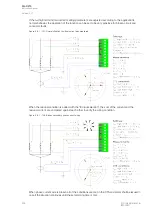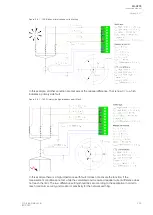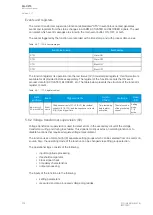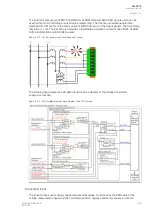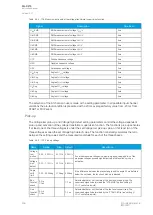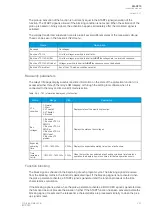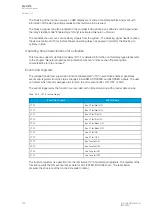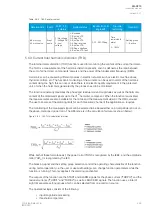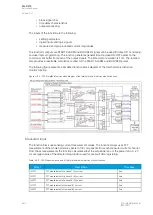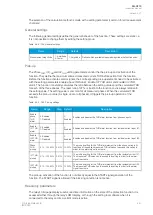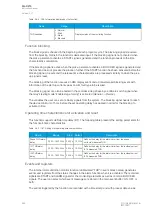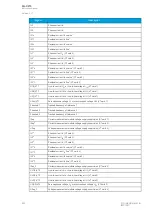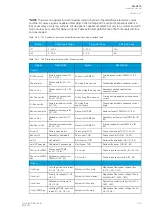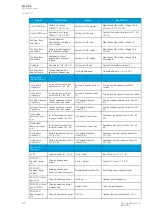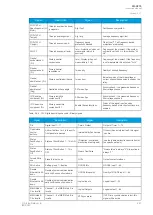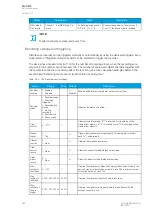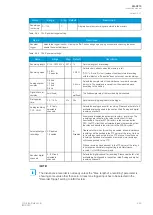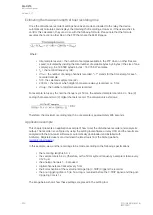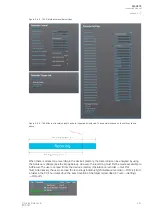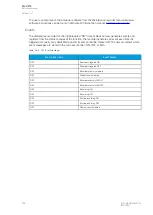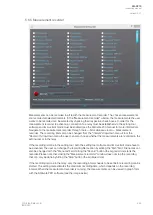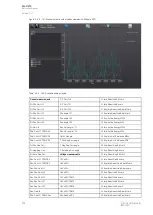
Table. 5.6.2 - 182. Register content.
Date and time
Event
Volt 1, 2, 3,
4 status
System status
Input A, B, C, D
angle diff
Trip time
remaining
Used SG
dd.mm.yyyy
hh:mm:ss.mss
Event
name
0: No voltage
1: Voltage OK
2: Low
voltage
0: Bus dead
1: Bus live, VTS
OK, Seq. OK
2: Bus live, VTS
OK, Seq. reversed
3: Bus live, VTS
OK, Seq. undefined
4: Bus live, VTS fault
0.00...360.00deg
Time
remaining to
alarm
0...1800s
Setting group
1...8 active
5.6.3 Current total harmonic distortion (THD)
The total harmonic distortion (THD) function is used for monitoring the content of the current harmonic.
The THD is a measurement of the harmonic distortion present, and it is defined as the ratio between
the sum of all harmonic components' powers and the power of the fundamental frequency (RMS).
Harmonics can be caused by different sources in electric networks such as electric machine drives,
thyristor controls, etc. The function's monitoring of the currents can be used to alarm of the harmonic
content rising too high; this can occur when there is an electric quality requirement in the protected
unit, or when the harmonics generated by the process need to be monitored.
The function constantly measures the phase and residual current magnitudes as well as the harmonic
content of the monitored signals up to the 31
st
harmonic component. When the function is activated,
the measurements are also available for the mimic and the measurement views in the HMI carousel.
The user can also set the alarming limits for each measured channel if the application so requires.
The monitoring of the measured signals can be selected to be based either on an amplitude ratio or on
the above-mentioned power ratio. The difference is in the calculation formula (as shown below):
Figure. 5.6.3 - 163. THD calculation formulas.
While both of these formulas exist, the power ratio (
THD
P
) is recognized by the IEEE, and the amplitude
ratio (
THD
A
) is recognized by the IEC.
The blocking signal and the setting group selection control the operating characteristics of the function
during normal operation, i.e. the user or user-defined logic can change function parameters while the
function is running. This only applies if the alarming is activated.
The outputs of the function are the START and ALARM signals for the phase current ("THDPH") and the
residual currents ("THDI01" and "THDI02") as well as BLOCKED signals. The function uses a total of
eight (8) separate setting groups which can be selected from one common source.
The operational logic consists of the following:
• input magnitude processing
• threshold comparator
A
AQ
Q-C215
-C215
Instruction manual
Version: 2.07
© Arcteq Relays Ltd
IM00040
239


